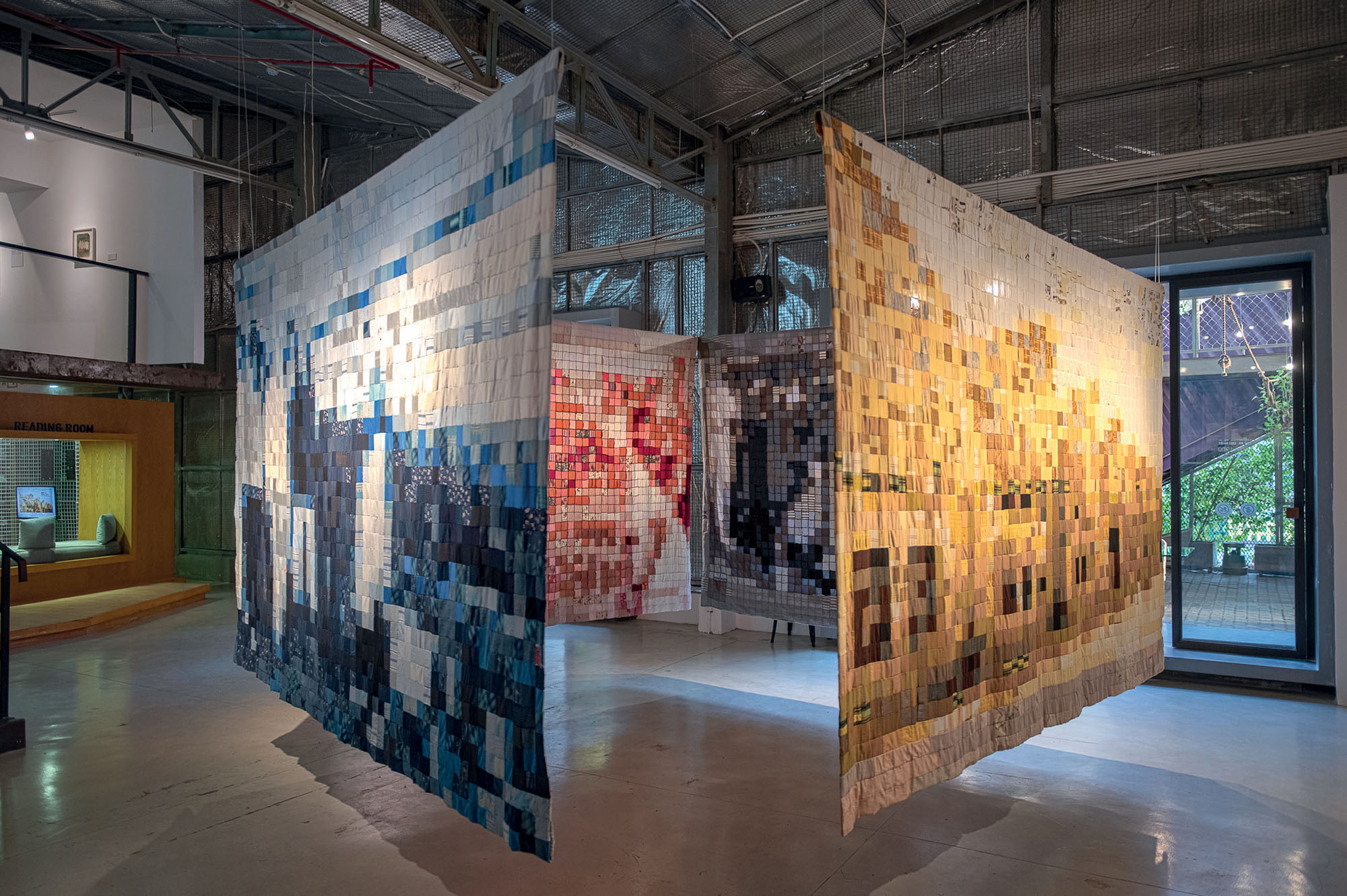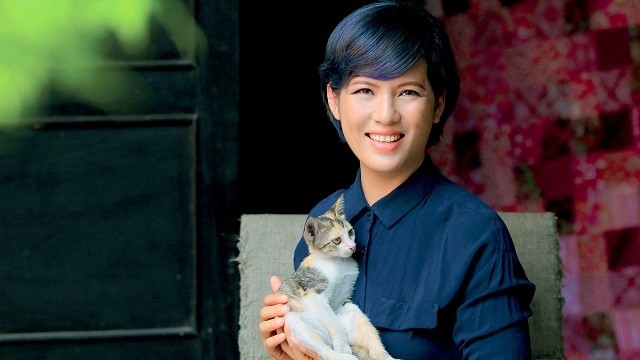By displaying 19 hanging mosaics of various sizes, each comprising a myriad of fabric squares from discarded garments, Vo Tran Chau has blurred the line between her two major arts practices: embroidery and photography. She granted an interview to Nhan Dan (People) Weekly Newspaper to talk more about the exhibition.
Question: As a graduate from the Vietnam University of Fine Arts with a major in lacquer work, what brought you to practice with cloth and fabric?
Artist Vo Tran Chau: I have years working on contemporary art after my graduation. I had tried different materials before realising that cloth and fabric drew my interest the most and fit with me the most. Since I was a little girl, I have worked at my family’s sewing factory.
My first solo exhibition in 2017, ‘Neo Lai Ky Lau’ (Lingering at the Peculiar Pavilion), also featured embroidered paintings, fabric sculptures and a unique form of mosaic tapestries on daily costumes and outfits of descendants of the Nguyen dynasty (1802-1945).
When embarking on the ‘Leaf Picking in the Ancient Forest’ exhibition, I decided to utilise old shirts that I had collected from unclaimed containers at the Saigon and Cat Lai harbours. I also used abandoned second-hand clothes in order to minimise the amount of waste released into the environment.
Why did you choose to work on old clothes rather and higher quality fabrics or other materials?
I think that every outfit has its own story and life, and each of them can tell the story of its owner. After collecting the huge amount of used cloths, my mother and I began classify them for recycling. I gave those which are still in good condition to workers near my house, and I used those which are unrecyclable as the material for my exhibition.
You can see the four artworks in the centre of the gallery, forming a circle. They represent four textile factories, namely the Nam Dinh, March 8, Phu Phong and Phu Lam factories, which were built under the French rule and have now been torn down to build new urban areas.
 |
Works on display at the ‘Leaf Picking in the Ancient Forest’ exhibition Photo: The Factory Contemporary Arts Centre)
As you may know, the fashion industry is one of the major polluting industries in the world. Does the ‘Leaf Picking in the Ancient Forest’ imply your art discourse on the environment?
Through the exhibition, I want to convey my meditations on life and the environment around me. It is obvious that our environment is being devastated by the rapid development of urbanisation and pragmatism, causing many consequences for water and air, as well as climate change.
As everyone knows, the fashion industry is one of the major polluting industries, as the excessive production and consumption of fibres, and garments used in fashion all contribute to differing forms of environmental pollution.
‘Leaf Picking in the Ancient Forest’ also recreated old buildings in the county which have been passed by time, including Tra Co Church, Gia Dinh School, Saigon Tax Trade Centre, and Ba Son Shipyard. What inspired you to recreate the buildings?
In contrast with the growth of that clothing mountain is the disappearance of cultural heritages. Therefore, I want to use things no one uses anymore to recreate a space of the past, which is in memory of people.
I worked with Tran Quang Duc, a person with a great understanding of history who shares the same aspiration to share about things from the past through history.
As an artist, what do you think about the disappearance of heritages and vestiges?
As an artist, I am working as a story teller. From the bottom of my heart, I still feel regretful and uneasy when a beautiful thing is about to disappear. I have seen that many countries in the world have worked to convert or restore old buildings, which can tell a story about their history.
I hope that similar solution will be adopted in Vietnam. As the buildings disappear, I keep wondering about visual evidence with which to tell our descendants about history.
Thank you so much for your sharing!
















